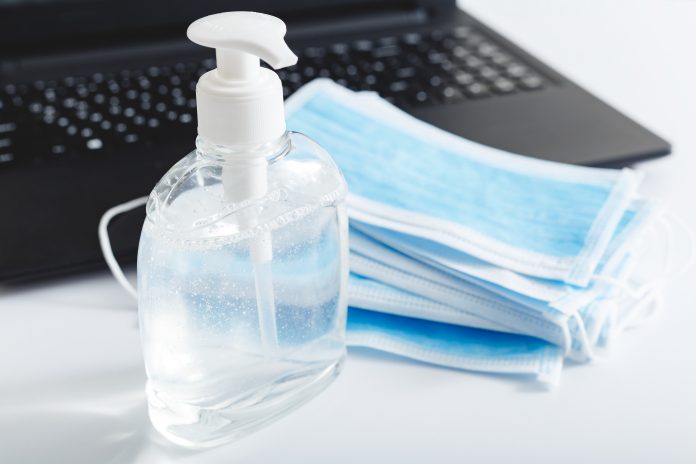Shaun Doak, CEO of REACT Specialist Cleaning, advises how organisations can create a safe workplace for key workers during the COVID-19 pandemic
As restrictions are lifted, organisations will be coming to terms with a shift in focus from commercial survival to getting back to work. For some, there will be a new normal as some of the working practices adopted during lockdown begin to change the way many people work in the long-term.
Most people will have experienced the ease with which meetings can now be held online rather than by commuting to them in person. While we don’t expect wholesale change, it is certainly noticeable that a number of business leaders we have spoken to have remarked how much more productive some activities have become through enforced remote working.
This clearly underpins the drive towards digitisation we hear so much about in the media and in network conversations. Despite this, many organisations will still face the reality of large numbers of people returning to the workplace in roles that have yet to be impacted by digitisation (or perhaps never will), and with it comes a key priority: the health and wellbeing of our colleagues.
A subset of this will be answering the question, “How do I persuade people that coming into our workplace will be safe?”
I face this question daily from my clients, from those looking after public buildings and transport networks to FM organisations responsible for offices and commercial properties. The answer we believe lies in having a clear understanding of the risks and how to mitigate against them effectively. One of the key components of this is the quality and effectiveness of the cleaning and hygiene process in place.
Regular cleaning and testing
REACT are a cleaning and hygiene specialist with years of experience focused on dealing with, among other things, infectious pathogens. While the characteristics and treatment can change from one to the next, the baseline approach is the same: test before, clean, disinfect and test again afterwards.
This is the only way to be certain that an area is clear of infection. Understanding how and where to test for traces of infection alongside what cleaning and disinfectant regime to use in different circumstances is where the skill and experience comes in. The cleaning and hygiene regimes required range from regular cleaning of high touch areas to deep cleaning where infection is known to have occurred
We believe that one of the best ways to give your colleagues confidence they are returning to a safe working environment is to regularly test areas for cleanliness and the absence of dangerous pathogens such as SARS-CoV-2, the virus that causes COVID-19.
Regular cleaning of high touch areas is relatively straightforward, provided that the correct methodology and materials are used. Deep cleaning methodologies do differ. Therefore, it’s important to ensure the one you choose is effective.
Being certain that the type of property and surfaces present are effectively sanitised and that the method used does not damage soft furnishings or create a different type of health hazard are all important factors to consider – please make sure you know what you are getting and if in any doubt please contact a specialist.
Our top tips for a safe workplace:
- Encourage colleagues and visitors to exercise good hygiene, including washing their hands regularly
- Place hand sanitisers around the workplace and encourage their use
- Encourage the wearing of facemasks, especially where safe distancing in the workplace is a challenge – some employers are making facemasks available to their employees.
- Discourage face-to-face meetings unless they can be done where safe distancing protocols can be observed, i.e. in rooms large enough for people to enter and remain at least 2 meters apart. Use electronic communication, video conferencing, etc wherever possible.
- Review and implement a cleaning regime aimed at reducing the risk of cross-infection, especially in shared high-touch areas. This should include cleaning, disinfecting and regular testing of surfaces to give confidence that these areas are clean.
- Make certain managers and colleagues understand the symptoms of COVID-19 and how to spot them
- Have a room permanently on standby to isolate anyone who develops the symptoms while at work. Make sure they have access to a telephone to call 101 to get the correct diagnosis, treatment and action plan. If possible, isolate a nearby toilet/bathroom that they can exclusively use.
- If someone in the workplace is likely to have a case of COVID-19, have the contact details of a trusted deep cleaning organisation readily at hand to provide immediate remediation once the person has left the premises.
- Keep colleagues regularly updated. Good policies are only useful if your colleagues are aware of them.











